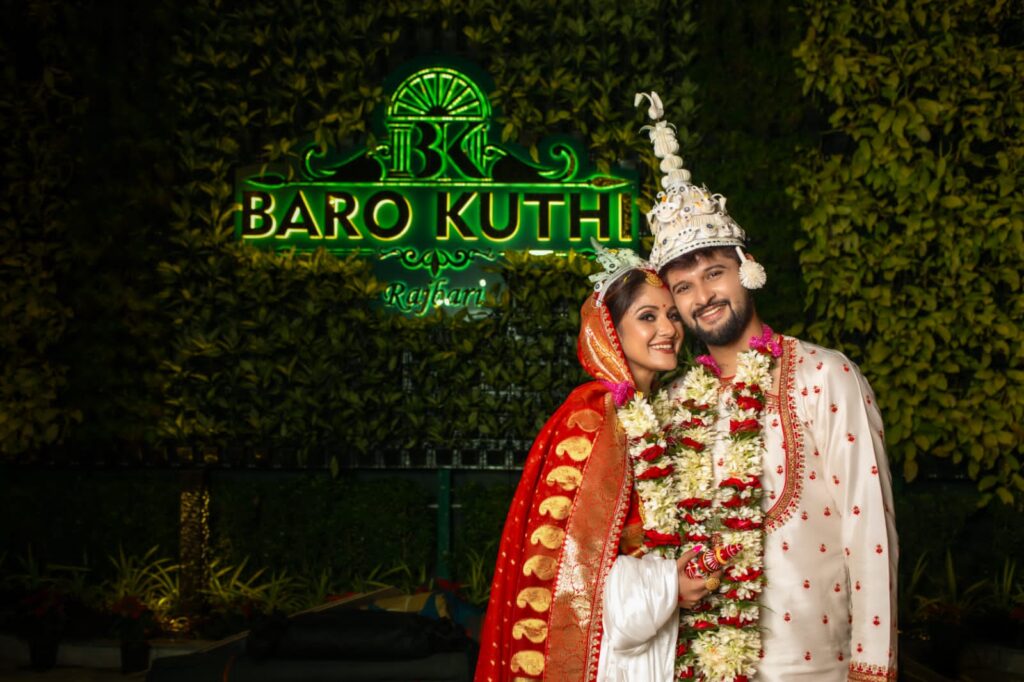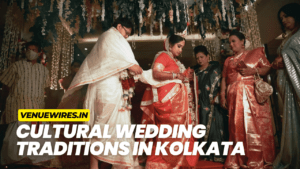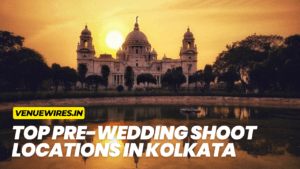Bengali weddings are a vibrant mix of tradition, culture, and celebration. Known for their rich rituals, stunning attire, delicious cuisine, and grand festivities, a Bengali wedding is more than just an event—it’s an experience! Whether you are planning a Bengali wedding or simply curious about its customs, this guide will walk you through everything you need to know.
Pre-Wedding Rituals: The Journey Begins
1. Paka Katha (Official Wedding Confirmation)
Before the grand wedding celebrations begin, families from both sides meet to finalize the wedding date and discuss arrangements. This is similar to an engagement but without an exchange of rings.
2. Ashirbaad (Blessing Ceremony)
A few days before the wedding, elders from both families bless the bride and groom with gold jewelry, rice, and trefoil leaves, symbolizing prosperity and happiness.
3. Aiburo Bhaat (Bride & Groom’s Last Meal as Unmarried Individuals)
In a fun and heartwarming tradition, the bride and groom enjoy a lavish feast at their respective homes, marking their last meal as aiburo (unmarried individuals). The meal includes classic Bengali dishes like Shukto, Pulao, Mutton Curry, and Mishti Doi.
4. Gaye Holud (Turmeric Ceremony)
In this colorful pre-wedding ritual, turmeric paste is applied to the bride and groom, symbolizing purification and enhancing their glow for the big day. The event is filled with music, dancing, and joyful celebrations.
The Wedding Day: A Grand Affair
1. Bor Jatri (The Groom’s Grand Arrival)
The groom, dressed in a traditional dhoti-kurta with a topor (conical headgear), arrives at the wedding venue with his family and friends in a lively procession.
2. Saat Paak & Subho Drishti
Upon arrival, the bride is seated on a piri (wooden stool) and is carried by her brothers while circling the groom seven times—this is called Saat Paak. The couple then exchange glances in Subho Drishti, marking the first time they officially see each other on their wedding day.
3. Mala Badal (Garland Exchange)
The bride and groom exchange floral garlands as a symbol of acceptance and love.
4. Sampradan & Sindoor Daan
The wedding rituals take place in front of the yagna (sacred fire), with the priest chanting mantras. The bride’s father ‘gives her away’ in the Sampradan ritual. Finally, the groom applies sindoor (vermilion) on the bride’s forehead, marking her as married.
Post-Wedding Rituals: A New Beginning
1. Bidai (Bride’s Emotional Farewell)
The most emotional part of the wedding, the bride leaves her parental home to start a new journey with her husband’s family.
2. Bou Bhaat (Bride’s First Meal in Her New Home)
The next day, the bride prepares and serves rice to her in-laws, symbolizing her official acceptance into the family. A grand reception follows.
Bengali Wedding Essentials: A Checklist
✔ Venue: Banquet halls, heritage homes, or outdoor spaces.
✔ Food: Must include Fish, Mutton Kosha, Pulao, Rosogolla, and Mishti Doi.
✔ Attire: Brides wear red Benarasi sarees; grooms wear dhoti-kurta.
✔ Music: Traditional Shehnai or live bands add to the celebration.
A Bengali wedding is a perfect blend of tradition and grandeur. If you are planning one, VenueWires can help you find the best venues and services to make your big day unforgettable!
🎊 Ready to plan your dream Bengali wedding? Explore top venues on VenueWires today!









